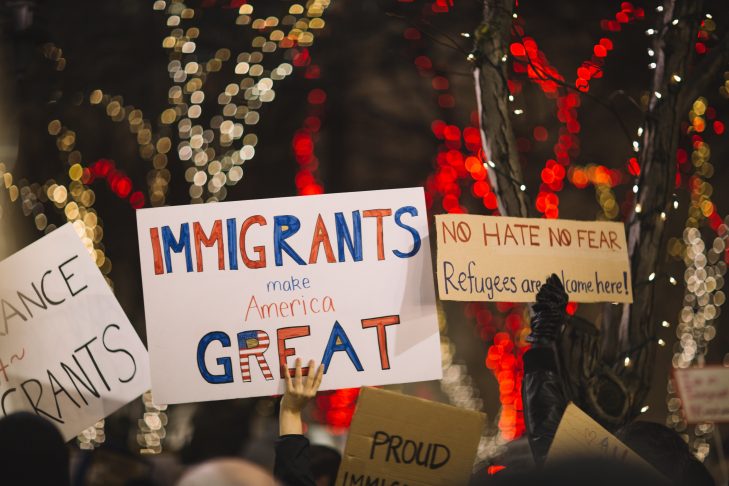The Jonathan Samen Hot Buttons, Cool Conversations Discussion Series focusing on current events lived up to its name last week. The “hot button” issue was “The Immigration Debate: Balancing Security and Compassion.” The “cool conversation,” moderated by journalist Julia Preston, a contributing writer at The Marshall Project who also covered immigration for The New York Times for a decade, took place on Jan. 8, the evening the president addressed the nation on immigration and the wall he intends to build along the southern border.
The panelists for the evening included Matthew Segal, legal director of the ACLU Massachusetts, under whose leadership the ACLU has brought significant cases defending immigrants’ rights; Rodrigo Saavedra, a DACA recipient and community organizer; and Jessica Vaughn, director of policy studies at the Center for Immigration Studies and a former U.S. diplomat and writer.
Preston framed the program with a summary of the issues for discussion. She noted that President Trump “wants a wall with a capital W.” She further observed that such a wall amounted to a “monument, a barrier” that the president could point to as an effective way to keep out drug smugglers, sex traffickers, terrorists and gang members. The president’s message, said Preston, was clear: “Immigration is basically dangerous for America.”
The evening’s highlights included a vigorous discussion of the family separation policy instituted last summer by the administration. Segal declared that family separation was “designed to hurt people. One of the most devastating things you can do to hurt people is take away their children.” He added that there was no plan to reunite parents with children and the action itself was tantamount to “stealing” children.
Vaughn supported the president’s request for building a wall but cautioned that it was not a silver bullet. She pointed to the need to reform the American asylum system and to provide more resources for customs and border agencies. She asserted that in recent months there has been a huge spike in people arriving with children and that the government cannot detain them. “The reason people are coming here,” she said, “is to work. The federal government needs to cut off the magnet bringing people here illegally. People are also overstaying their visas because of the prospect of employment.”
Saavedra countered that many people who come to the United States are not criminals or drug lords. They are looking for jobs that Americans don’t otherwise want. “There is an economic dependency on immigrants,” he said. “In Massachusetts, 50 percent of hospitality workers are undocumented. To solve the problem, you have to zoom out and see what is going on in Central and South America. What is driving people here? The wall is not going to solve the issue. Immigrants, who are already here, should stay here. They contribute to society, and they pay their taxes. [The administration’s] argument is built on fear of the other.”
Preston introduced the possibility that the administration’s rhetoric may be partially responsible for anti-immigrant views. She observed that Robert Bowers, the shooter at the Tree of Life Synagogue in Pittsburgh, singled out the work of HIAS, a Jewish pro-refugee organization, as one of the reasons he went on his murderous rampage. She added that the broad ban on travel from Muslim countries, as well as the suspension of the refugee program at the beginning of the Trump presidency, also contributed to an anti-immigrant tone.
Segal responded that the president “has gone through a series of manufactured crises. He’s good at driving attention to certain topics.” At another point he described the wall as a “monument to a person.” Segal went on to express his personal opinion that the people in Pittsburgh might be alive today if the president did not express “negative views” on immigration.
Vaughn noted that people, in general, needed to “dial back the expression of their views on both sides of this issue, including the president.” She urged generating respectful conversations on immigration and asked for “more moderation and caretaking of expression on both sides.”
Saavedra added that as an organizer he’s observed the mood on the ground is one of aiming to be more strategic. “We’re trying to figure out how we can respond rapidly to detentions and deportation orders,” he said. “We have to figure out how we can pay someone’s bond.”
The evening ended with a question-and-answer period that reflected both sides of the immigration debate and demonstrated just how complicated the subject remains.



